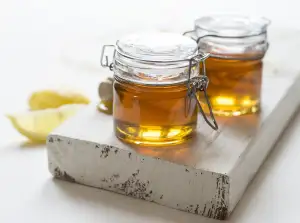Transform Your Belly Button: Explore the Outie to Innie Surgery for a Healthier You

Are you tired of feeling self-conscious about your outie belly button? Do you long for a flatter, more aesthetically pleasing navel? Look no further than the innovative procedure known as outie to innie surgery. This transformative surgery can help you achieve the belly button of your dreams and boost your confidence. In this article, we will explore the ins and outs of outie to innie surgery, including its benefits, risks, and recovery process. Get ready to embark on a journey towards a healthier and more satisfying body image.
Understanding the Outie Belly Button
The belly button, also known as the navel or umbilicus, is a unique feature of the human body. While most people have an innie belly button, some individuals have an outie belly button. An outie belly button is characterized by a protrusion of the navel, where the skin sticks out instead of being concave.
The formation of an outie belly button can be attributed to various factors. One common cause is excess scar tissue from the healing process after birth. In some cases, it may also be due to an umbilical hernia, where abdominal tissue pushes through the abdominal wall near the belly button.
Having an outie belly button can sometimes lead to self-consciousness and dissatisfaction with one's appearance. This is especially true when individuals feel that their outie belly button does not align with societal beauty standards or causes discomfort in certain situations.
Fortunately, advancements in cosmetic surgery have made it possible to transform an outie belly button into an innie through a procedure known as "outie to innie" surgery. This surgical option offers individuals with outies the opportunity to achieve a more aesthetically pleasing and comfortable appearance.
By understanding the nature of an outie belly button and its potential impact on self-image, individuals can make informed decisions about whether outie to innie surgery is right for them.
Reasons for Considering Outie to Innie Surgery
There are several reasons why individuals may consider undergoing outie to innie surgery. One common reason is aesthetic dissatisfaction with the appearance of their belly button. Some people feel self-conscious about having an outie belly button and wish to achieve a more aesthetically pleasing innie belly button.
Another reason for considering this surgery is functional discomfort. Outie belly buttons can be prone to irritation and infection due to their exposed position. This can cause discomfort, especially when wearing tight clothing or engaging in physical activities.
Additionally, some individuals may have experienced changes in their belly button shape after pregnancy or weight loss. Outie to innie surgery can help restore the pre-pregnancy or pre-weight loss appearance of the belly button, boosting self-confidence and body image.
It's important to note that each person's reasons for considering this surgery may vary, and it's crucial to consult with a qualified plastic surgeon to discuss individual goals and expectations before making a decision.
The Surgical Procedure: How it Works
During the outie to innie surgery, a small incision is made around the base of the belly button. The surgeon then carefully removes excess skin and tissue, reshaping the belly button to create an innie appearance. The procedure typically takes about one hour and is performed under general anesthesia. After the surgery, dissolvable stitches are used to close the incision, leaving minimal scarring. This surgical procedure offers a safe and effective way to transform your belly button and achieve a more aesthetically pleasing look.
Benefits and Risks of Outie to Innie Surgery
Benefits of Outie to Innie Surgery include improved self-confidence, enhanced body image, and the ability to wear certain clothing styles without feeling self-conscious. The procedure can also correct any discomfort or irritation caused by an outie belly button. However, it is important to consider the risks involved. These may include infection, scarring, bleeding, and anesthesia-related complications. It is crucial to consult with a qualified surgeon and weigh the potential benefits against the risks before undergoing this surgery.
Recovery and Aftercare Tips
After undergoing outie to innie surgery, it is crucial to prioritize your recovery and follow proper aftercare tips. Here are some guidelines to ensure a smooth healing process:
1. Keep the incision area clean and dry: Gently clean the area with mild soap and water, patting it dry afterward. Avoid using harsh chemicals or rubbing the incision site.
2. Dressing changes: Follow your surgeon's instructions regarding dressing changes. It may be necessary to apply antibiotic ointment or dressings to promote healing and prevent infection.
3. Avoid strenuous activities: Refrain from engaging in strenuous exercises or heavy lifting for at least four to six weeks post-surgery. This will allow your body time to heal properly.
4. Take prescribed medications: Your surgeon may prescribe pain medication or antibiotics to manage discomfort and prevent infection. Take these medications as directed.
5. Wear compression garments: Your surgeon may recommend wearing a compression garment around the abdomen to reduce swelling and support the healing process.
6. Follow a healthy diet: Eat nutritious foods that promote healing, such as fruits, vegetables, lean proteins, and whole grains. Stay hydrated by drinking plenty of water.
7. Attend follow-up appointments: Regularly visit your surgeon for follow-up appointments to monitor your progress and address any concerns or complications that may arise.
8. Be patient with the results: It takes time for the surgical site to fully heal and for the final results of the procedure to become apparent. Be patient and give your body time to adjust.
By following these recovery and aftercare tips, you can enhance your healing process and achieve optimal results from outie to innie surgery. Remember, each individual's recovery timeline may vary, so consult with your surgeon for personalized guidance throughout this period of transformation.
Frequently Asked Questions about Outie to Innie Surgery
1. Is outie to innie surgery safe?
Yes, the procedure is generally safe when performed by a qualified surgeon. However, like any surgery, there are risks involved, such as infection or scarring.
2. How long does the surgery take?
The duration of the surgery depends on individual factors, but it typically takes around one to two hours.
3. Will I have visible scars after the surgery?
The incisions made during the procedure are usually small and strategically placed to minimize scarring. Over time, any scars that do form tend to fade and become less noticeable.
4. What is the recovery time for outie to innie surgery?
Most patients can resume their normal activities within a week or two after the procedure. However, it may take several weeks for complete healing and for any swelling or bruising to subside.
5. Can I still have an outie belly button if I want one in the future?
In most cases, once you undergo outie to innie surgery, it is not possible to revert back to an outie belly button. It's important to carefully consider your decision before proceeding with the surgery.
6. Will my belly button look natural after the surgery?
Skilled surgeons strive to create a natural-looking innie belly button that suits your body shape and size. They take into account your unique anatomy and aesthetic preferences during the procedure.
7. Are there any age restrictions for this surgery?
There are no specific age restrictions for outie to innie surgery; however, it is recommended that individuals wait until their bodies have fully matured before considering elective cosmetic procedures.
Remember, it's crucial to consult with a qualified surgeon who can address your concerns and provide personalized advice based on your individual circumstances.
In conclusion, the outie to innie surgery offers individuals the opportunity to enhance their confidence and body image. By transforming their belly button, they can achieve a more aesthetically pleasing appearance that aligns with societal beauty standards. This surgical procedure provides a solution for those who have long felt self-conscious about their protruding belly button. While there are risks involved, the benefits of increased self-esteem and improved body image outweigh them for many individuals. If you are considering this surgery, consult with a qualified surgeon to discuss your options and determine if it is the right choice for you. Remember, your body is yours to embrace and love, and if this surgery helps you do so, then it may be worth exploring.
Published: 23. 01. 2024
Category: Health



